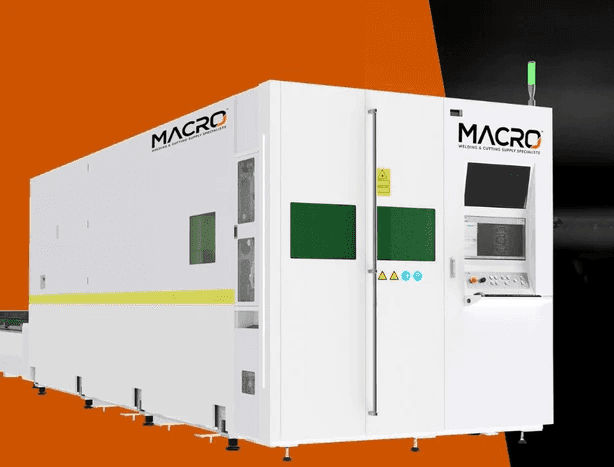Revolutionising Fabrication: The Benefits of Fiber Laser Cutting Machines
- Elevated Magazines

- Sep 12
- 4 min read

The landscape of modern manufacturing and fabrication has experienced a significant transformation, thanks to the advent of advanced technologies that optimize precision, efficiency, and quality. One such innovation that has had a substantial impact on the industry is the fiber laser cutting machine. This article delves into the myriad benefits that these sophisticated devices offer, underscoring why they are revolutionizing the world of fabrication.
Enhanced Precision and Accuracy
One of the foremost advantages of fiber laser cutting machines lies in their extraordinary precision and accuracy. These machines employ a laser beam concentrated through fiber optic cables, which can be finely focused to achieve incredibly precise cuts. The result is a marked improvement in the quality of the finished product, with detailed contours and minimal kerf widths being effortlessly attainable. This level of precision ensures that components meet exact specifications, critical for industries where precision is paramount.
Consistency in Production
Consistency in manufacturing is pivotal for maintaining quality standards, and fiber laser cutters excel in this domain. Once programmed, these machines can reproduce the same design multiple times with exactitude, which means that even the largest batches will have negligible variance from one piece to another. This trait is especially beneficial for mass production scenarios where uniformity is crucial.
High-Speed Operation
The speed at which fiber laser cutters operate greatly enhances throughput in a fabrication setting. Being able to cut materials quickly not only reduces lead times but also increases the potential output, making it an efficient choice for businesses looking to scale up their production without compromising quality.
Versatility Across Materials
Fiber laser cutting machines exhibit impressive versatility and can cut through a diverse range of materials, including metals, plastics, and composites. Different power settings and configurations allow fabricators to switch between materials with relative ease, broadening the scope of projects that can be undertaken with a single piece of equipment.
Energy Efficiency and Lower Operating Costs
An often-overlooked benefit of fiber laser cutting technology is its energy efficiency. These machines require less power to operate compared to traditional CO2 lasers, leading to savings on energy costs in the long run. Furthermore, the lower maintenance requirements associated with fiber lasers also translate to reduced operating costs and downtime, contributing to a more cost-effective production process.
Minimal Maintenance and Longer Lifespan
Maintenance demands are an imperative consideration when assessing manufacturing equipment. Fiber laser cutters are designed with solid-state components that are robust and have a longer lifespan than other types of cutting machinery. With fewer moving parts and consumables that need to be replaced, the maintenance requirements are significantly diminished.
Improved Safety and Cleanliness
Manufacturing environments benefit from the intrinsic safety and cleanliness associated with fiber laser cutting machines. The laser cutting process is largely contactless, which means that the risk of accidents involving machine operators is substantially reduced. Additionally, the process generates less debris and particulates, resulting in a cleaner working environment and less contaminants affecting the quality of the cut.
Integration with Advanced Software
Modern fiber laser cutters can be seamlessly integrated with sophisticated software, enabling operators to design and simulate cutting paths before execution. This integration streamlines the operations and allows for fine-tuning before commencement of the actual cutting process, thereby minimizing errors and material waste.
Environmental Impact
In an age where environmental concerns are becoming more pronounced, the eco-friendly profile of fiber laser cutting machines is an essential consideration. By consuming less energy and reducing waste, these machines contribute to more sustainable manufacturing practices, aligning with the growing need for industries to operate in a more environmentally responsible manner.
Meeting the Challenges of Complex Designs
Fiber laser cutting technology has opened the door for fabricators to take on more complex designs that would have been challenging or even impossible with other cutting methods. The fine level of control enables intricate cuts and detailed patterns, expanding the creative possibilities and technical capabilities of fabricators.
Reduced Material Waste
Efficiency in material usage is a key factor in the economic viability of manufacturing processes. Fiber laser cutting machines offer high yield from materials due to their precision and the ability to produce close nesting of parts on the material sheet. This aspect of laser cutting minimises waste, resulting in cost savings and a more sustainable operation.
Scalability
As businesses grow, the need to scale up production capabilities arises. Fiber laser cutting machines provide a scalable solution that can grow with the company. By investing in machines that can handle a wide range of materials and thicknesses, fabricators can cater to a larger customer base and expand into new markets without the need for multiple different cutting systems.
Enhancing Competitiveness
Today's market is highly competitive, and the ability to quickly adapt, innovate, and deliver high-quality products is crucial. The implementation of fiber laser cutting technology helps businesses stay competitive by enabling them to manufacture products with better precision, faster turnaround times, and at a lower cost than traditional cutting methods.
Conclusion
The advent of fiber laser cutting machines in the fabrication industry has heralded a new era of precision manufacturing. With benefits such as increased accuracy, efficiency, and adaptability to various materials, these innovative machines are setting new standards in manufacturing excellence. By leveraging the power of laser technology, businesses can not only enhance their production capabilities but also address the growing demands for sustainability and cost-effectiveness in the industry. As advancements in this field continue, it is clear that fiber laser cutters will remain pivotal in the evolution and revolution of fabrication processes.
